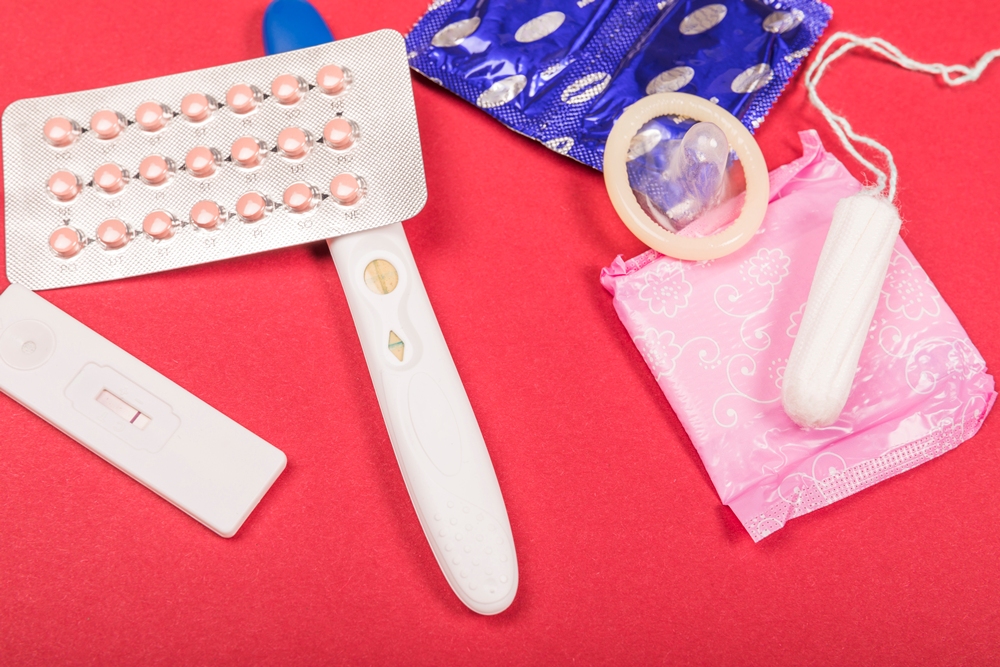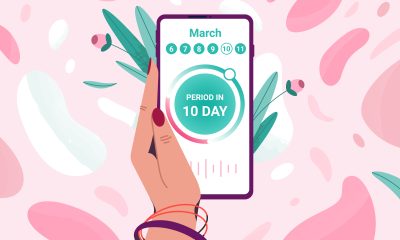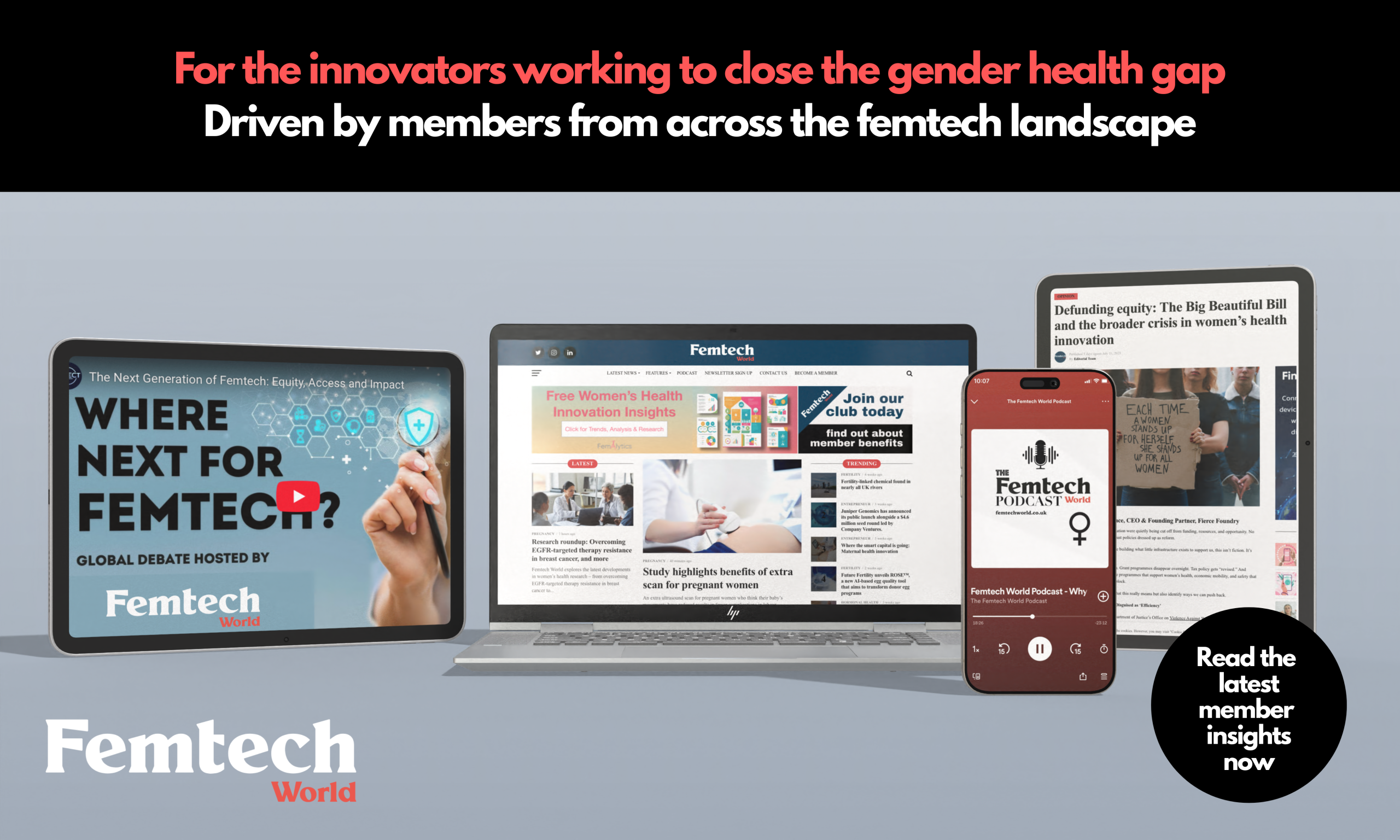Special
Seven effective strategies to promote your femtech brand
By Nicola Finn, associate director at OggaDoon

There is no question that in this digital age, purpose-led customers are taking a proactive role in their health and wellbeing. It’s no surprise we are seeing a spike in retail health and femtech gadgets.
Post-Covid, there has been a massive increase in technology adoption across the healthcare spectrum, with both consumers and ecosystem providers looking to adopt more tech for good in various configurations, according to the Parks Associates Report.
As products move through from alpha to beta and onto commercialisation, health tech innovators and strategists need to select a mix of promotional strategies to drive awareness, adoption, downloads or sales of a brand’s offering. Here’s how you can promote your femtech idea.
Data: the scene-setting golden gem
Industry and lifestyle data is key for mapping out both problems and solutions in femtech marketing. Journalists use the data to confirm the market size, and it is also used to set the scene on a market need and demonstrate quantifiable benefits or benchmarks for improvements.
Qualified experts
When promoting any health product, service or brand, qualified experts are vital in communicating the factual benefits and details of the proposition to both the end customer and the media. It is the scientifically backed voice that is needed to cement credibility. This can be linked to the wider lifestyle benefits and seasonal celebrations.
Company experts are invaluable to the wider brand story and can be the spokespeople of the company by participating in panel sessions or webinars.
The content of such webinars can also be repurposed as thought leadership articles or blogs. The C-suite founder story is of interest to specific media titles, but it is the expert that bridges the science, real life and lifestyle which is the golden thread.
Focus on real people
Real customer experiences are key to bringing a product or service to life. They can demonstrate the real impact that a health, general wellbeing or femtech brand has had on a person’s life, which can inspire others to embark on a similar journey.
This builds credibility when prospective customers are doing their research. It also makes for a good “real life, real impact” health article that a lot of publications are crying out for.
If you are looking to expand in a particular market and you want press coverage, then get those case studies drafted.
Authenticity
Research shows that consumers value authenticity and choose products and brands based on how well they align with their values. A claim of authenticity needs to be backed up and reinforced in different ways. This is where content marketing strategies come into play.
Consumers and journalists are more selective and sceptical about product and brand marketing messages, so how do you make them believe your offer?
Being a commercial enterprise may, at first, seem like a mammoth task. However, it’s quite easy to be genuine!
The key is to tell genuine “brand” stories that customers can connect with, about real people, and demonstrate genuine results or market data.
Reviews
Encouraging customers to post product and brand reviews online is a great way to demonstrate your credibility. Reviews can help to cross-sell products to current customers or create an authentic, positive impression on prospective customers.
Positive reviews create trust from potential customers by reducing purchase risk and making the customer feel more comfortable in their decision-making. When reviews are made they can be shared on the website, in adverts or on social media that customers can further share with their network.
Partner with wellbeing, health or lifestyle influencers
To complement press articles and reviews it is worth considering collaborating with an influencer that is a good fit with your product or brand. Influencers are categorised into nano-, micro-, macro-, and mega-influencer categories, based on their follower base and reach.
Another effective model is to work with an influencer as a content creator with the agreement being about them creating authentic content, which your brand can share to its own channels, or apply amplification via paid advertising.
When researching and selecting influencers don’t go on follower count alone. Brand alignment is key, as is strong engagement.
Influencers can work on either a paid or gifted agreement. However, a contract should be drawn up to agree on output. Part of this agreement would include a number of posts, a backlink, or a discount to followers.
Build the community
Digital marketing and social media create many opportunities for health, wellbeing or femtech brands to engage with their customers and followers.
Timely, automated messaging can be set up to promote the product or brand offer. Testimonials can be shared to inspire others, and questions can be shared to drive engagement.
This, coupled with effective brand positioning and content marketing, will reinforce the value and impact that the product or brand is making in the end consumer’s life. This is by supporting their goals and making a real impact on their longer-term health and wellbeing.
Nicola Finn is an associate director at the PR and digital marketing agency OggaDoon.
News
HIV research paves way for new ovarian cancer therapies

HIV research has identified a new target for ovarian cancer by selectively blocking a cleft in the retinoblastoma protein that protects tumour-supporting macrophages.
The discovery could make ovarian – and potentially other – cancers more responsive to immunotherapies, treatments that use the body’s immune system to fight disease.
Scientists at the Wistar Institute found that targeting a specific cleft in the retinoblastoma protein removed only tumour-supporting macrophages while sparing those that fight disease.
Macrophages are immune cells that can either attack tumours or shield them from harm.
The work builds on decades of HIV studies led by Dr Luis Montaner, executive vice president of the Wistar Institute and director of its HIV Cure and Viral Diseases Center.
Montaner said: “This target emerged from our work understanding how macrophages survive HIV infection.
“It shows how insights from one field of medicine can inform breakthroughs in another.”
Targeting tumour-protecting macrophages without harming beneficial ones has long been a challenge.
Wistar researchers showed that selectively inhibiting this protein cleft depleted only tumour-supporting macrophages, leaving protective immune cells intact. Animal studies confirmed tumour shrinkage using this approach.
Montaner said: “This is a first-in-kind target against a solid tumour.
“It opens new avenues for therapies that could complement existing immunotherapies.”
The study highlights the value of long-term, cross-disciplinary research. It took more than 10 years from the initial HIV-linked finding to identifying this cancer target.
Next steps include exploring applications in acute myeloid leukaemia, pancreatic cancer and combination therapies.
News
US incineration of contraceptives denies 1.4m African women and girls lifesaving care, NGO says

The US decision to incinerate US$9.7m worth of contraceptives is expected to result in 174,000 unintended pregnancies and 56,000 unsafe abortions across five African countries.
The medical supplies, many of which were not due to expire until between 2027 and 2029, would have supported more than 1.4 million women and girls in the Democratic Republic of Congo, Kenya, Tanzania, Zambia and Mali.
The products had already been manufactured, packaged and prepared for delivery. Around 77 per cent were earmarked for distribution in the five African nations.
The International Planned Parenthood Federation (IPPF), a global healthcare provider and advocate for sexual and reproductive rights, offered to take the contraceptives for redistribution at no cost to US taxpayers. The offer was declined.
IPPF said the decision would deny women and girls in the affected countries access to lifesaving care.
Tanzania will be hardest hit, losing more than 1 million injectable doses and 365,100 implants – small devices inserted under the skin that release hormones to prevent pregnancy.
This amounts to 28 per cent of the country’s total annual contraceptive need.
Dr Bakari, project coordinator at Umati, IPPF’s member association in Tanzania, said: “We are facing a major challenge.
“The impact of the USAID funding cuts has already significantly affected the provision of sexual and reproductive health services in Tanzania, leading to a shortage of contraceptive commodities, especially implants.
“This shortage has directly impacted clients’ choices regarding family planning uptake.”
In Mali, women will lose access to 1.2 million oral contraceptive pills and 95,800 implants, nearly one-quarter of the country’s annual requirement.
In Zambia, 48,400 implants and 295,000 injectable doses will no longer be available. In Kenya, 108,000 women will go without contraceptive implants.
Marie Evelyne Petrus-Barry, IPPF’s Africa regional director, called the move “appalling and extremely wasteful”.
She said: “These lifesaving medical supplies were destined to countries where access to reproductive care is already limited, and in some cases, part of a broader humanitarian response, such as in the DRC.
“The choice to incinerate them is unjustifiable.”
In Kenya, the cuts compound an already strained system.
Nelly Munyasia, executive director of the Reproductive Health Network in Kenya, said stocks of long-term contraceptives had already run out, and warned of further consequences.
She said: “There is a 46 per cent funding gap in Kenya’s national family planning programme,.
“These systemic setbacks come at a time when unmet need for contraception remains high. Nearly one in five girls aged 15 to 19 are already pregnant or has given birth.
“Unsafe abortions remain among the five leading causes of maternal deaths in Kenya.”
Munyasia also warned that health workers’ skills are being eroded and said a lack of contraceptive access would increase maternal deaths as more women seek unsafe abortions.
While Kenya’s 2010 constitution allows abortion when a pregnant person’s life or health is at risk, the 1963 penal code still criminalises the procedure.
As a result, healthcare providers often avoid offering abortion care, even in emergencies.
A US state department spokesperson confirmed last month that the decision to destroy the supplies had been authorised.
Reports indicated the products were to be incinerated in France, prompting the French government to say it was “following the situation closely” following objections from rights and family planning groups.
The state department said the contraceptives could not be sold or donated to “eligible buyers” due to US legal restrictions, which prohibit foreign aid to organisations that provide abortion services, counsel on abortion, or advocate for abortion rights overseas.
Mental health
Gates foundation pledges $2.5bn to ‘ignored’ women’s health issues

The Gates Foundation will invest US$2.5bn in women’s health research by 2030, it announced on Monday, focusing on conditions from preeclampsia to menopause.
The pledge is around one-third more than the foundation spent on women’s and maternal health research and development over the past five years.
It is also among the first major commitments since Bill Gates said he would give away his US$200bn fortune by 2045.
Gates said: “Women’s health continues to be ignored, underfunded and sidelined. Too many women still die from preventable causes or live in poor health,” said Gates.
“That must change.”
The new funding will support research into under-studied conditions affecting hundreds of millions of women in both high- and low-income countries.
These include preeclampsia – a pregnancy complication that causes high blood pressure – and gestational diabetes, as well as heavy menstrual bleeding, endometriosis and menopause.
Investment will focus on five priority areas: obstetric care and maternal immunisation; maternal health and nutrition; gynaecological and menstrual health; contraceptive innovation; and research into sexually transmitted infections.
The aim is to kickstart research, develop new products, and ensure equitable global access to treatments.
Just one per cent of healthcare research and innovation spending goes to female-specific conditions beyond cancer, according to a 2021 analysis by McKinsey & Co.
Dr Anita Zaidi, the foundation’s head of gender equality, said the field has been held back by data gaps and bias.
She noted that key questions remain unanswered – including how some medicines interact with the uterus.
She told Reuters: “If you look at the literature, there may be only 10 women who’ve been studied, ever.
“We don’t even have the answers to these basic questions.”
Zaidi said the US$2.5bn pledge is a “drop in the bucket” compared to what is needed, and called on governments, philanthropists and the private sector to step in.

 News4 days ago
News4 days agoDozens of women report suffering painful burns after using Always sanitary towels

 Opinion3 weeks ago
Opinion3 weeks agoFDA plans to revise black box warning on menopause hormone therapies

 Entrepreneur2 weeks ago
Entrepreneur2 weeks agoAI-powered women’s health companion Nexus launches in UK

 Insight1 week ago
Insight1 week agoWomen’s health innovations recognised in TIME’s Best Inventions 2025

 News3 weeks ago
News3 weeks agoScientists turn human skin cells into eggs in IVF breakthrough

 Wellness3 weeks ago
Wellness3 weeks agoDaily pill could delay menopause ‘by years,’ study finds

 News3 weeks ago
News3 weeks agoAncient herb to modern must-have: Why ashwagandha is capturing UK women’s attention

 News2 weeks ago
News2 weeks agoMenstrual cycle affects women’s reaction time, study finds




























